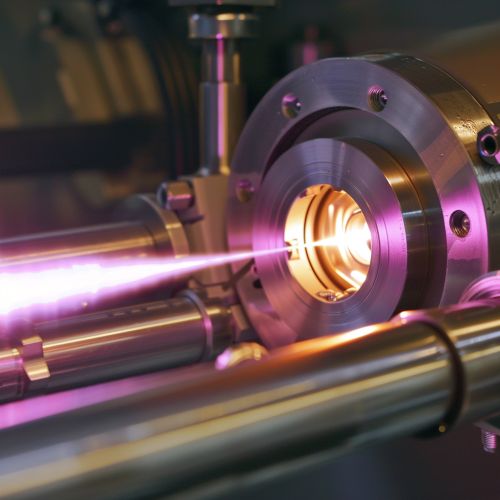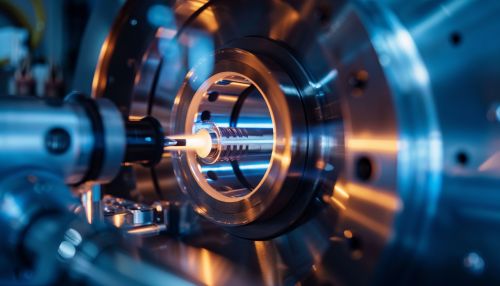Ion Pump
Overview
An ion pump is a device used to create a high vacuum by ionizing gas and using electric fields to accelerate the ions into a solid target where they are buried. Ion pumps are used in a variety of applications, including particle accelerators, electron microscopes, and space propulsion systems.
Operation
The operation of an ion pump involves several steps. First, the gas to be pumped is ionized by an electron beam. The ions are then accelerated by an electric field towards a solid target. When the ions strike the target, they bury themselves in the material, effectively removing them from the vacuum. This process is repeated continuously to maintain a high vacuum.


Types of Ion Pumps
There are several types of ion pumps, each with their own advantages and disadvantages. The most common types are the diode pump, the triode pump, and the sputter ion pump.
Diode Pumps
Diode pumps are the simplest type of ion pump. They consist of a single anode and cathode, and operate by ionizing gas and accelerating the ions towards the cathode. Diode pumps are relatively inexpensive and easy to operate, but they have a lower pumping speed than other types of ion pumps.
Triode Pumps
Triode pumps are similar to diode pumps, but they include a third electrode, or grid, between the anode and cathode. The grid serves to increase the ionization efficiency, resulting in a higher pumping speed. However, triode pumps are more complex and expensive than diode pumps.
Sputter Ion Pumps
Sputter ion pumps operate by sputtering, or ejecting, atoms from the cathode using a high-energy ion beam. The sputtered atoms then bury themselves in the anode, effectively removing them from the vacuum. Sputter ion pumps have a high pumping speed and are capable of achieving very high vacuums, but they are more complex and expensive than diode or triode pumps.
Applications
Ion pumps are used in a variety of applications, including:
- Particle accelerators: Ion pumps are used to create the high vacuum required for particle accelerators to operate effectively.
- Electron microscopes: Ion pumps are used to create a high vacuum in the sample chamber of an electron microscope, allowing for high-resolution imaging.
- Space propulsion systems: Ion pumps are used in some types of electric propulsion systems for spacecraft, where they ionize and accelerate propellant to generate thrust.
Advantages and Disadvantages
Like all vacuum pumps, ion pumps have both advantages and disadvantages.
Advantages
- High vacuum: Ion pumps are capable of achieving very high vacuums, on the order of 10^-10 torr.
- No moving parts: Unlike mechanical pumps, ion pumps have no moving parts, making them more reliable and less prone to failure.
- No vibration: Ion pumps operate without causing vibration, which can be important in sensitive applications such as electron microscopy.
Disadvantages
- Slow pumping speed: Ion pumps have a relatively slow pumping speed compared to other types of vacuum pumps.
- High cost: Ion pumps are more expensive than other types of vacuum pumps.
- Complexity: Ion pumps are more complex and require more maintenance than other types of vacuum pumps.
